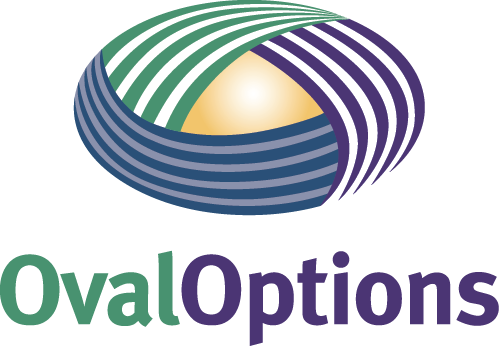By Jason Gladfelter, Director of Brewery Mediation NetworkThis article expands on the article written by Ed Sealover published in the Denver Business Journal Aug. 5th: "What Ails Colorado Brewing". Craft brewing is (still) booming. The Colorado economy alone sees $1.15 billion from the burgeoning brewery business, and currently there are more than 300 brewing licenses in Colorado, according to the Boulder-based Brewers Association. The craft brew business certainly looks delicious…from afar.Yet growing pains persist. Sure, it has high-profile enemies in the form of big-brewer buyouts, trademark disputes and the forecasted bubble burst, but perhaps the most crippling threat resides within the industry and individual breweries themselves: your crew and you. Internal friction, poor communication and disjointed operations can cost a brewery dearly and even lead to its demise. If this is uncomfortable for you to hear, good. That means you must keep reading.Every brewery has a People Ingredient, which has two main components: the obvious (people) and the formless (their interactions). While it is common knowledge that breweries hire qualified individuals, it is also important to keep them, to utilize their skills and benefit from their role and input on the brewery team. How? That's a great question, and this is where the tricky part comes into play.Interpersonal interaction, communication and cooperation face obstacles, and the devil is in the details. These terms are not new, but are taken for granted or misunderstood. What does communication actually entail? What are considered "interactions"? And does cooperation mean more than just getting along?The keystone is communication. We must pay heed to what Sun Tzu said: "know the enemy and know yourself." In this case, the enemy is poor interpersonal skills, and yourself is…well, yourself. How well do you communicate? Communicating is more than using the correct words; it includes listening, understanding the process of word selection, the words you select, your state of mind, your overt and latent emotions, the medium used, knowing your audience, and why you feel compelled to communicate at all. This is not easy, to say the least. Even the best businesses can suffer from fragile internal dynamics, miscommunication and misunderstandings that can decrease productivity and foster disappointing results.While poor communication and disjointed operations can plague any company, the craft brewery industry is especially vulnerable to these common pitfalls. Many breweries start out as small businesses, without the budget or scope to maintain full-time staff to manage the daily facets and dynamics of internal communications, or install and maintain special systems for grievances and feedback. Often that responsibility falls on the brewer, the owner, a board member or shift supervisor – if there are any. And their glasses already runneth over with their primary responsibilities. Furthermore, many small craft breweries are formed by close knit groups where established relationships are plunged into unfamiliar waters. Emotions can affect difficult business decisions, and vice versa, making sticky situations almost immovable and especially frustrating. Fortunately, there are processes craft breweries can acquire and utilize to prevent and avoid potential internal disasters.In a March 8, 2016 Forbes article, Harpoon Brewery CEO Dan Kenary discussed his leadership lessons and revealed that he and his business partner couldn’t co-exist. Eventually, Kenary’s passion for beer conflicted with the need for profits. He realized the salience of the People Ingredient. His employees became his partners and culture came first.David Lin, Chairman of Comrade Brewing, understands the importance of the People Ingredient. With a background in hospitality management and sporting an MBA, David hires people "who are smarter and more talented" than himself and "there's no shortage of those people." He applies the age old motto: "treat people like you would want to be treated." While this is great advice with a strong foundation, keeping up its practice in a business setting can be difficult. Especially if starting a brewery involves outside investors.Brewers focus on creating beer they love: Investors and owners rightfully seek return on investment and to keep costs low. Disagreements and disputes between the sides ensue. Egos and judgements inflate. “Brewers are not managers,” a brewing industry profession once told me. Add to that its reverse, “managers are not brewers,” and we get a recipe for toxicity and damage. But they need each other.Or as Tim Myers, Strange Craft Beer Company owner deftly puts it: “being an awesome home brewer doesn’t make you an awesome business partner…breweries that have great recipes but no business savvy have had to find out how to survive.”Myers should know. He spent 18 months in conflict with a Boston home brew shop over trademark and other legal issues. Now he is parting ways with a business partner and friend of 12 years. “We were a textbook case for everything that could go wrong, would go wrong.” he adds. “Two buddies going into business together is almost as risky as a couple thinking that having a child can save a marriage!” Myers describes themselves as naïve, thinking they knew everything needed to open a brewery. They didn’t have responsible partner practices, they had no operating agreement and “while we were frenetically running and trying to expand the business, things failed.” He currently spends “too much of his time” negotiating a buyout. Hardly a yellow brick road.“I’m happy we’re still alive,” says Myers, adding that having business experience in one industry doesn’t prepare you for the craft brewery business. He wishes he had spent time and money using business or communication consultants on crafting an operating agreement, as well as a buy/sell agreement. “If we had written and verbal communication plans in place and had agreed on a set of solutions while we were all on the same page, it would have changed everything. When forming a partnership, everyone assumes it will be rosy; no one talks about the ‘what if’s.’ It’s not a negative process to plan for the future, it’s looking out and protecting each other.” One such plan is inserting a mediation clause into written agreements, whereby parties utilize mediation if/when disagreements and disputes arise. Mediation is the middle step between DIY and securing legal advocacy, and it can save time, money, stress and your business.“Failure is a good teacher, instant success isn’t,” so says Bill Eye, current head of Denver's new Bierstadt Lagerhaus. At age 53 he is considered a veteran amongst the younger craft brewers. Eye is another example of a passionate brewer who had to learn from what he describes as “lost dreams”. He is emphatic in proselytizing a philosophy rooted in cynicism yet yearning for the positive. “Too many brewers and business partners become at odds for it to be a coincidence. Before forming a partnership, you must examine your goals or become victims of circumstance”.The circumstance Eye refers to is the reality that brewers have the passion: they speak and live the culture before ever attempting to make it a career – they go to conventions and tastings and collaborative festivals. They follow their artistic motivations. Then the reality of needing capital causes the search for a financial partner, who naturally wants return on her/his investments. The beer makers want something more esoteric – they want the lifestyle that goes with the beer making: “I love the feeling of walking around the bar and seeing people enjoying my beer; it’s so validating,” says Eye. “But the investors don’t need that, they just want the beer sold and distributed”. Eye adds “It’s not wrong, it’s just the reality”.This is where the cycle of incommunicado begins, and it manifests itself in completely different approaches, from day-to-day to long-term. It leads to animosity, grudges, hazy perspectives, misunderstanding, dropped duties and lost jobs. It creates a culture where money is expected to trump everything and brewers feel resentful and are lead to believe they don’t have value and are not protected. “Business people can’t be successful without us,” says Eye. “We really do have intellectual property and knowledge that should be valued as much as the money side”.His lessons learned? Mandatory must-do: operating agreements that are symbiotic as well as balanced (“So I won’t lose control”), goals that are delineated in advance, business plans that are joint-collaborations, and partners who understand with whom they are going into business. This takes intense, interactive strategic planning meetings to discover, understand and prepare for the details of running a brewing business. Not many individuals have all the answers, or even all the questions. Pooling intellectual and creative resources can address this challenge.“There is more than one way to do things; every brewer in the industry has an opinion on nitro beers or Vermont style IPAs. We can disagree at fundamental levels, but the best way to flourish as an industry is to come together and share our points of view,” says Adam Dunbar, Mountain West District Manager for Green Flash Brewing Co. Dunbar loves his position, the company and the infrastructure at Green Flash. But after intense frustrations at a prior position – experiencing what he now considers a lack of communication, confusing hierarchy and vague strategies—he relishes the current family-oriented culture and clear structure at Green Flash. Communication is collaborative (weekly meetings, sharing ideas openly and honestly). He describes fluid working conditions and more of a flat hierarchy, and tools such as a best practices procedures and a manual. Adam would like to see more in-person brewers’ summits and fewer blog, Facebook and online complaints. “At the end of the day we will learn something and it will be beneficial. Let’s face it, our brains are wired differently and we should find solidarity in coming together and talking shop.”“Mario”, a self-proclaimed beer geek with a science and business background, entered the craft brewery world believing he could truly pair his academic acumen with his hobby. Within a few months, he was out. The main reason: communication. “I was a manager yet didn’t know what the strategy was.” Mario sees most of the craft beer industry made of young, non-corporate-trained people. There’s a lack of organizations structure and no communication processes. There is little planning and communication of goals and objectives, making it difficult to impossible for employees to do their jobs effectively. Mario goes on to say that brewers need to hire consultants specialized in business conflict to train them in planning, strategy, communication and conflict management. They need to be able to “keep their employees from feeling like they’re shooting from the hip”. “Sometimes a little corporate-type of structure is a good thing,” he says. His biggest piece of advice: “don’t wait until you need mediation, put in practices to avoid going out of business.” Of course, mediation is always an option.These cautionary tales serve as critical advice, but more importantly they highlight the need to dig deeper into, and understand, a brewery's People Ingredient. Brewery owners and staff must respect the importance of communication and interaction and the details therein. They must not ignore the ‘soft skills’ designed to strengthen intra-brewery communication and relations. Talented, artistic individuals and experienced business people require strong communications and interactions to become a symbiotic and successful team. After all, what can make or break a brewing business is its skill set involving personal interaction, conflict management and communication. But it's tricky once we start peeling back the layers.Communication, for example, has many layers aside from personal exchanges; operating agreements, best practices, team cohesion, organizational structure, planning, strategies and objectives, training and development as well as conflict management and problem solving. Honest feedback and constructive criticism are always "welcomed", but they are still difficult to absorb and provide. It helps to have constant or continual personal interaction, if for no other reason than to keep people connected. Mike Sardina at Societe Brewing outlines some of their practices to foster interpersonal relationships. "We have a staff appreciation day each year, and we sponsor group outings whenever possible. We have a 'beer with a brewer' program where one of our Tasting Room staff members will go out for a beer with one of our Co-Founders or with a brewer or with me personally." Even if they engage in no shop-talk, these measures help improve interactions.Adopting and honing skills to improve intra-brewery relations, can literally be the difference between thriving and failure. This is a difficult task in no small part due to the personal introspection, criticism and learning, as those profiled have experienced. There is no shame in admitting mistakes, ignorance or lack of skills. It just means that you're wiser than you were yesterday and can improve. Not easy; but to quote Sun Tzu again, "…If you do not know your enemies nor yourself, you will be imperiled in every battle; if you do not know your enemies but do know yourself, you will win one and lose one; if you know your enemies and know yourself, you will not be imperiled in a hundred battles." The battle here is against the erosion of the People Ingredient. Knowing yourself is the first step to better understand, manage and enrich your People Ingredient. And your brewery will thank you for it.--------------------------------------------------------------------------------------------Jason Gladfelter is Director of the Brewery Mediation Network and a principal at Oval Options for Conflict Management, an organization that helps business, communities, and families find better options for resolving their conflict through mediation, strategic planning, evaluation, arbitration, facilitation, coaching and training. He has more than 20 years of experience in team leadership, management and customer relations positions through his extensive work in the retail, sales and training industries. He is a Cicerone® Beer Server, has written over 3,000 beer reviews and is a home brewer. Jason is also working on implementing a series of Brewer Summits. Twitter @BeerMediation About Oval Options: Oval Options (www.ovaloptions.com) is a Denver-based Conflict Management and Mediation firm. We help clients find the most appropriate method for resolving disputes. Our pool of practitioners covers a wide range of industries including domestic (divorce/child custody), health care, elder care, estate, construction, community mediation, craft brewing & wine, and housing. OvalOptions is home to Brewery Mediation Network which helps connect breweries with affordable dispute resolution methods. It handles all types of disputes, including the most noticeable (Trademarks) to the most common (partnerships). The Network also makes available facilitation, coaching, consulting, team building and other trainings to breweries in areas including:







